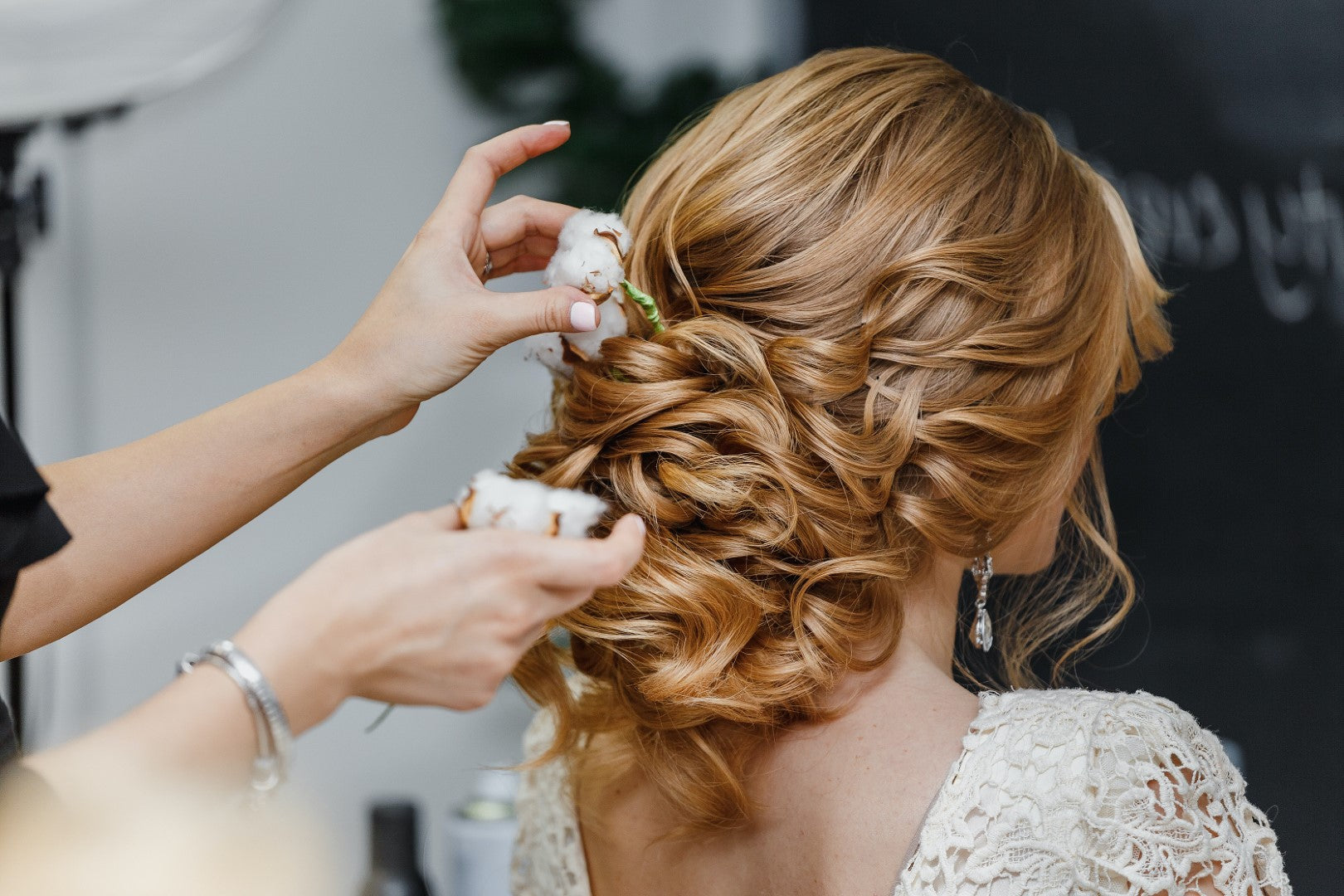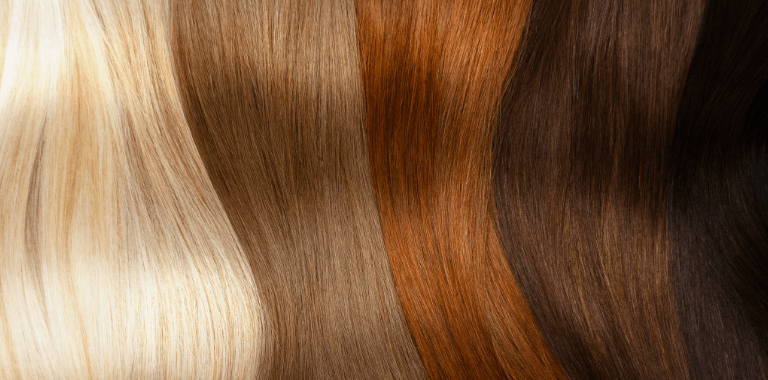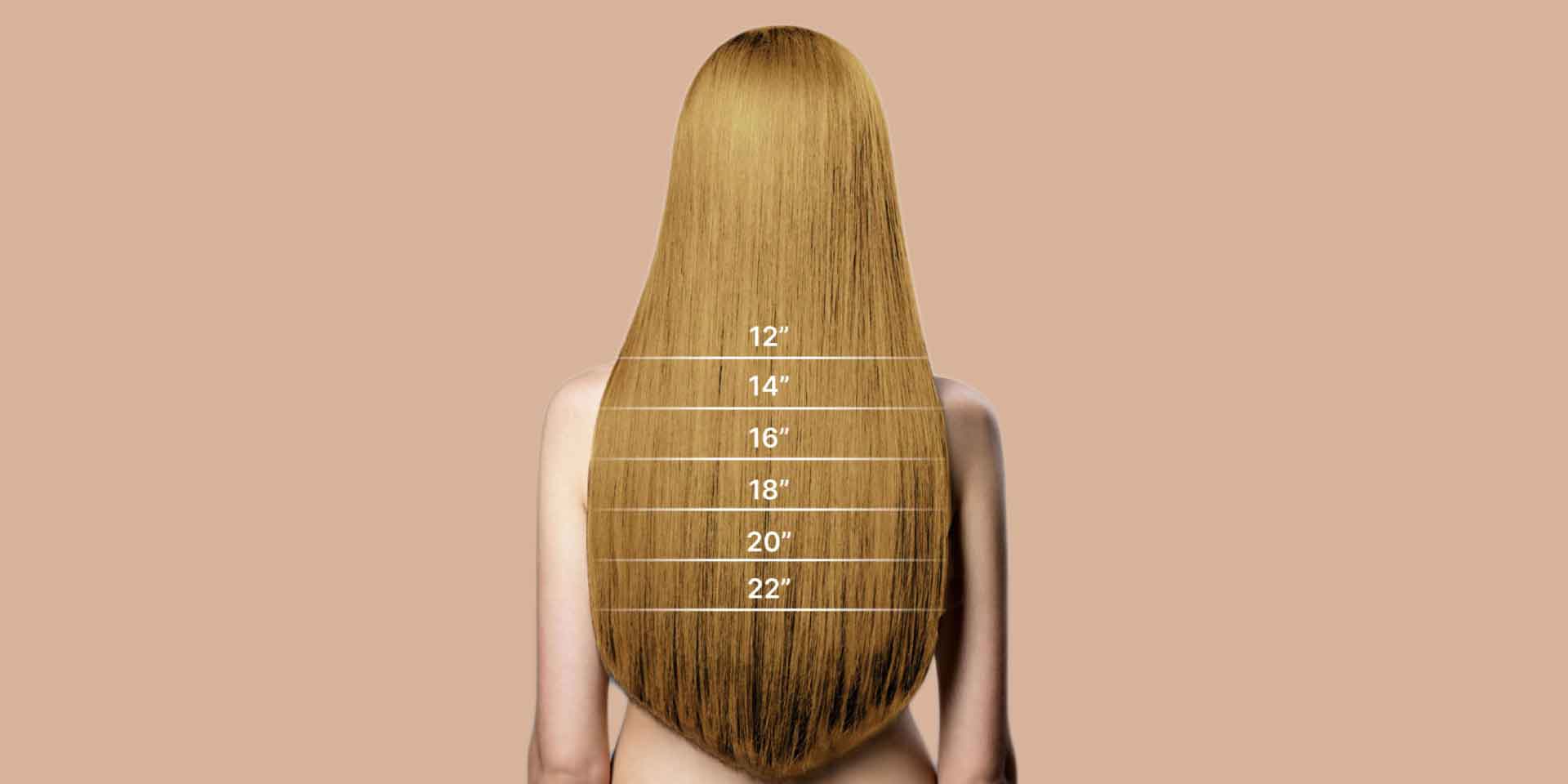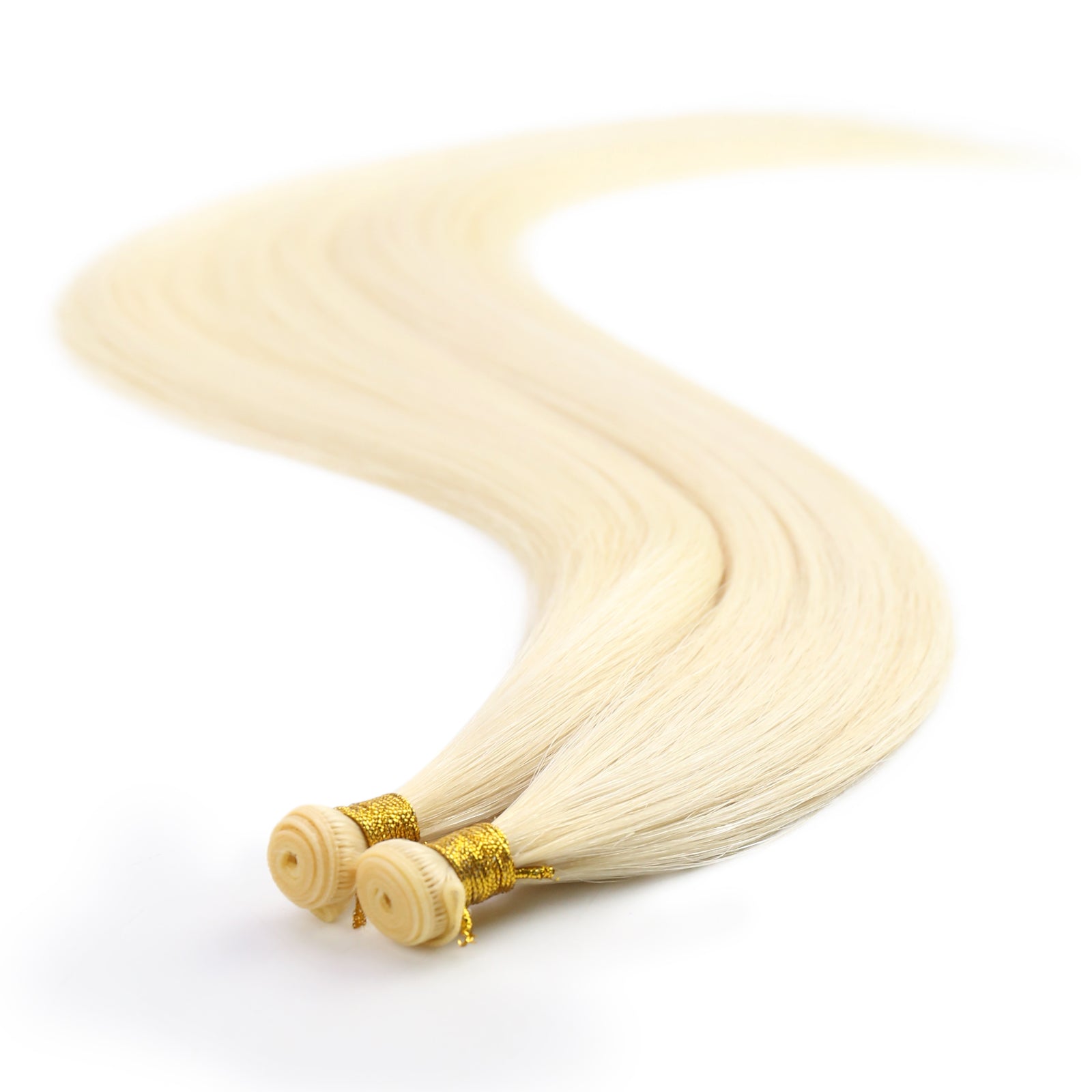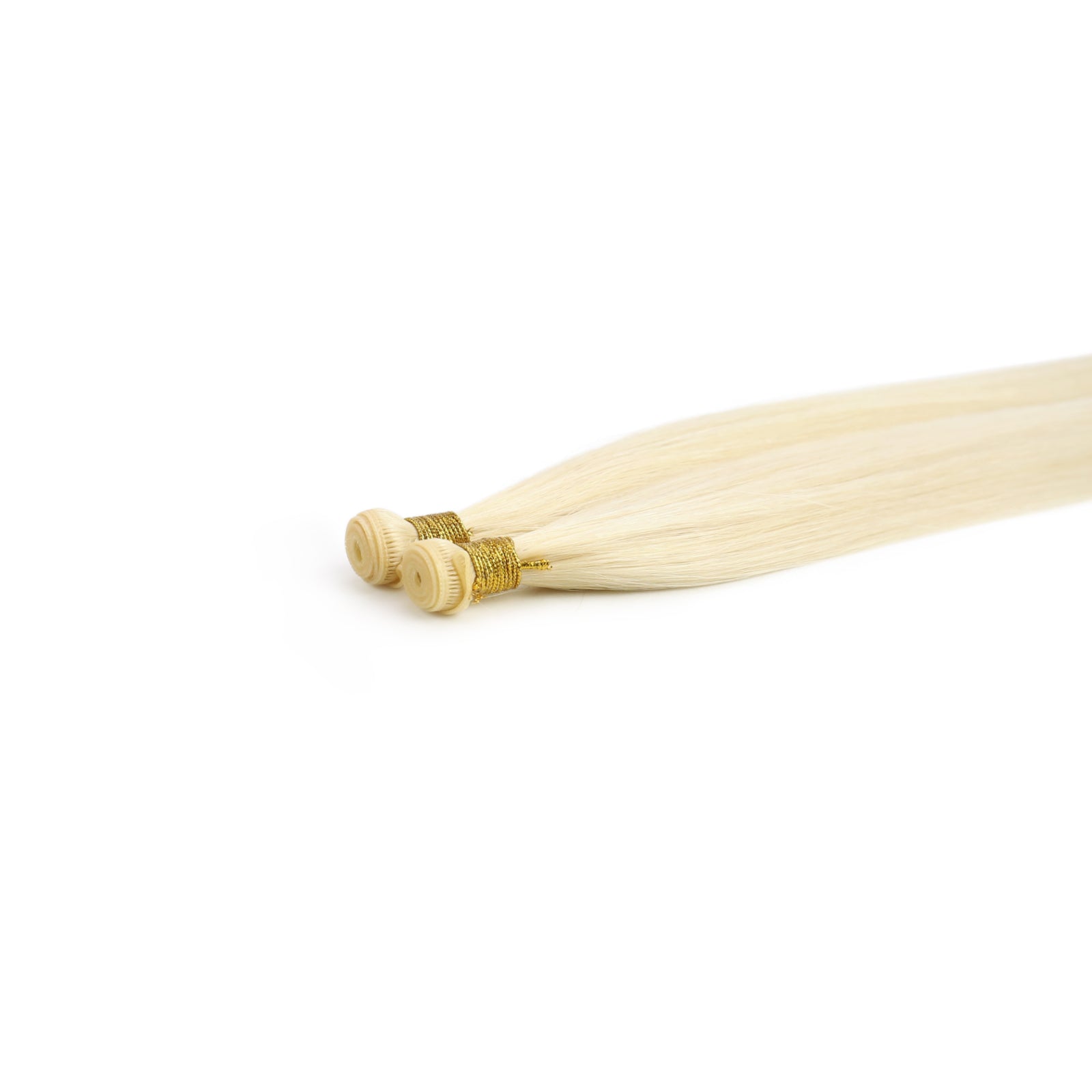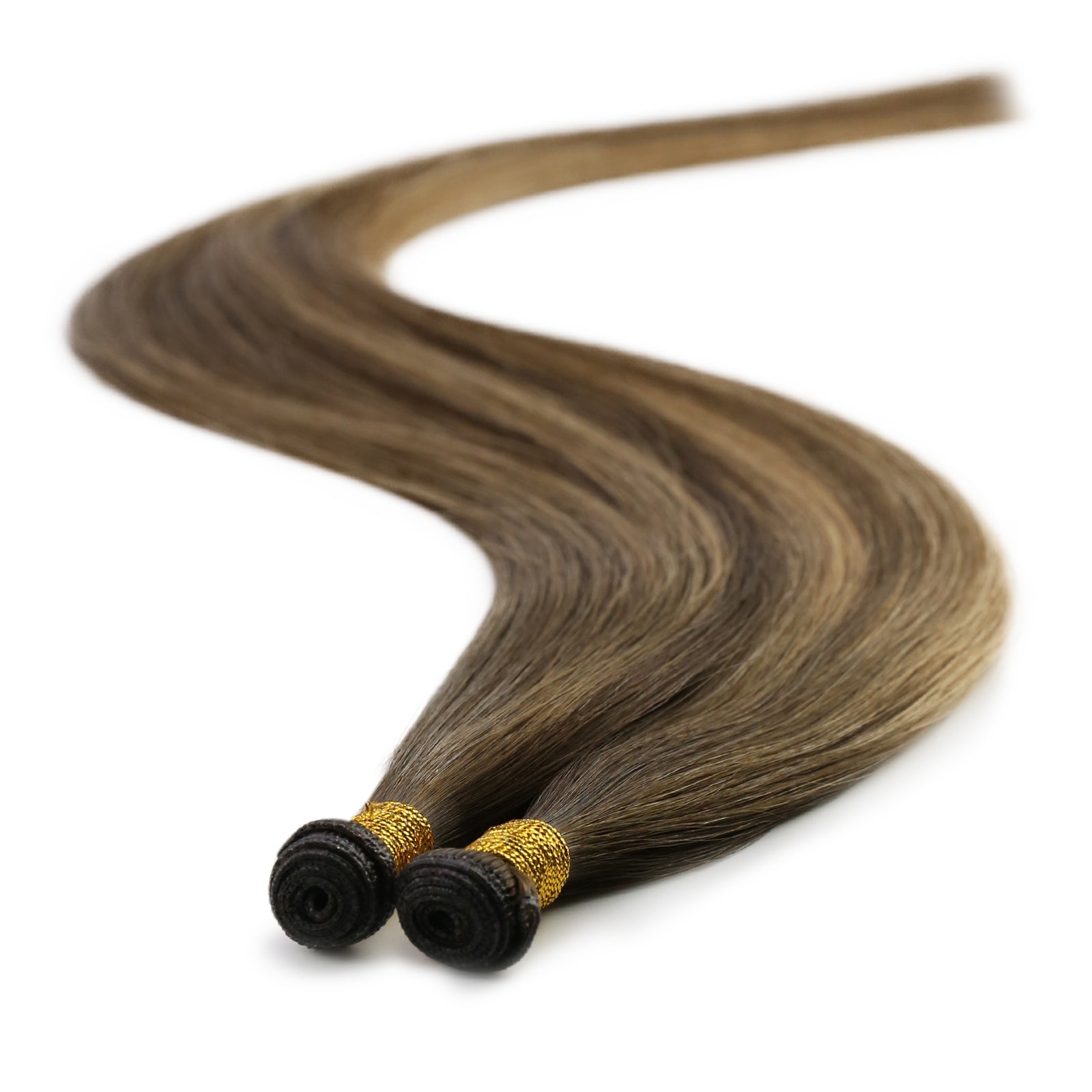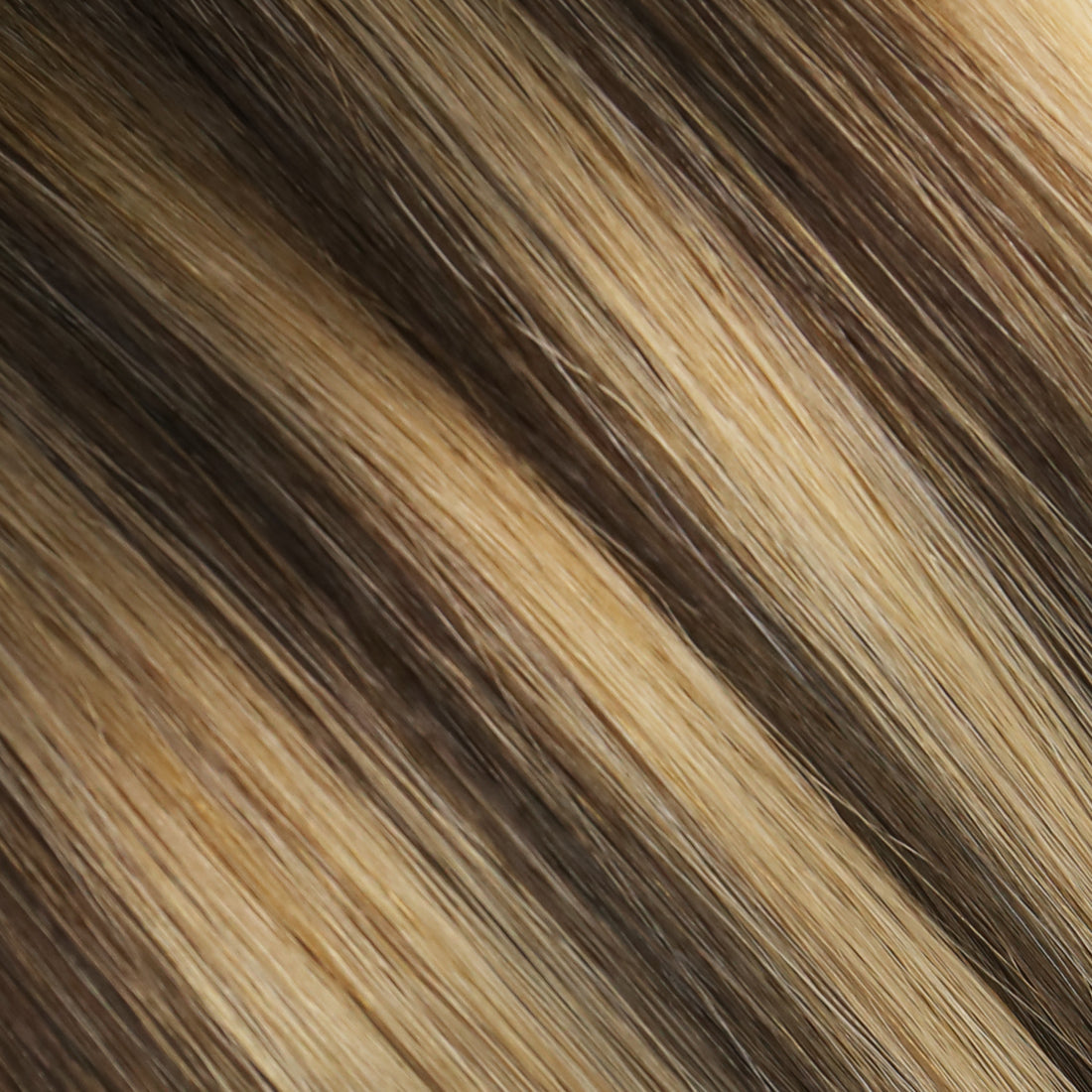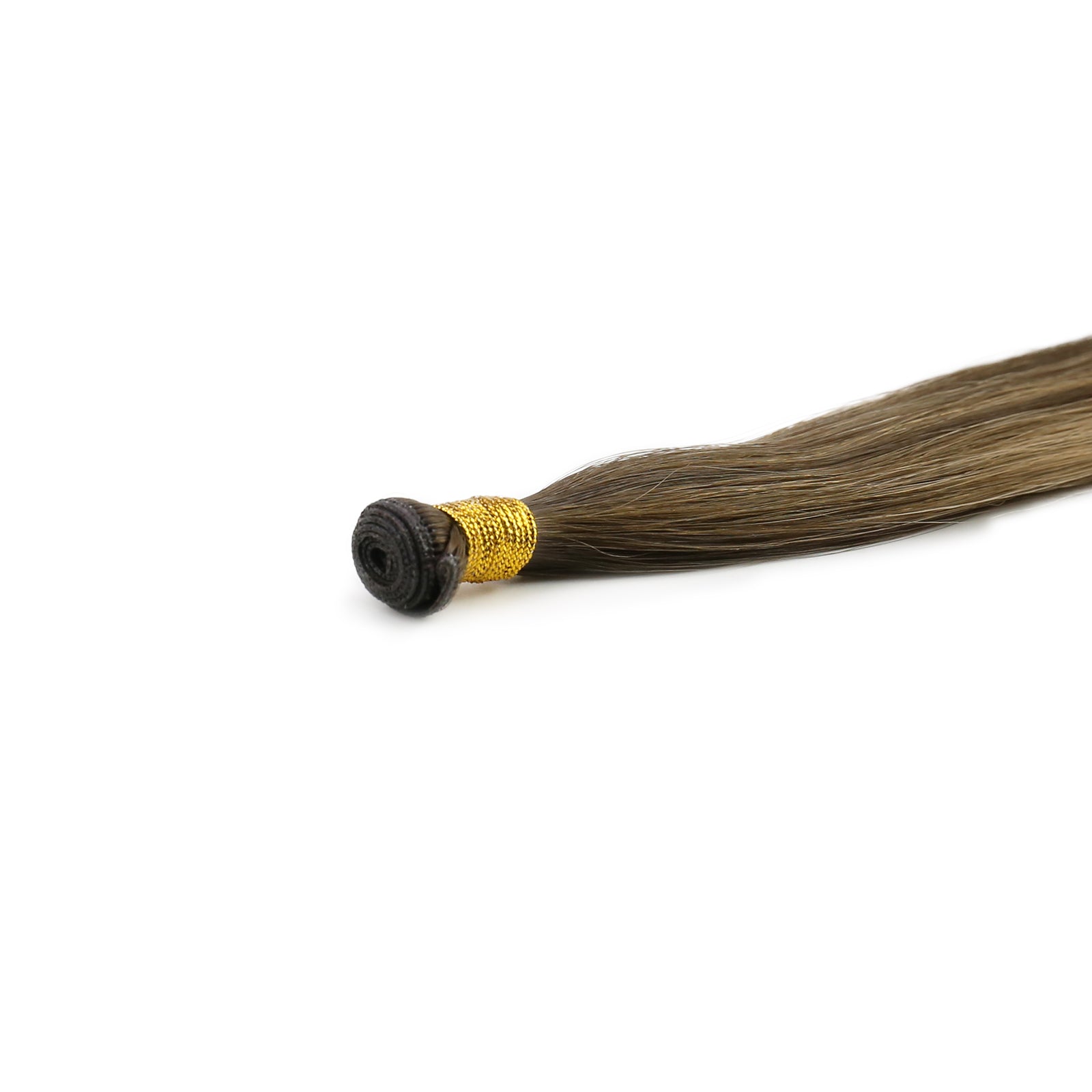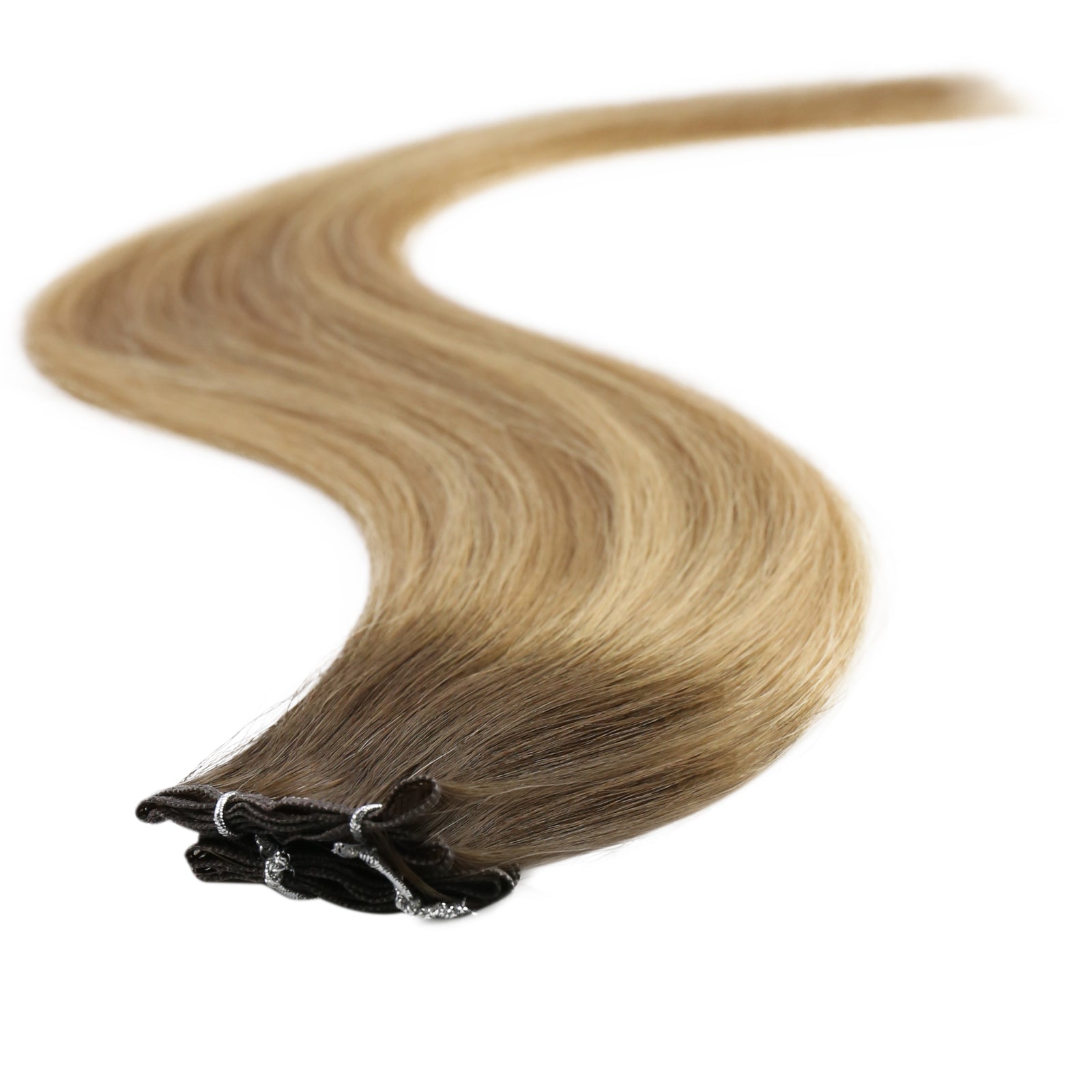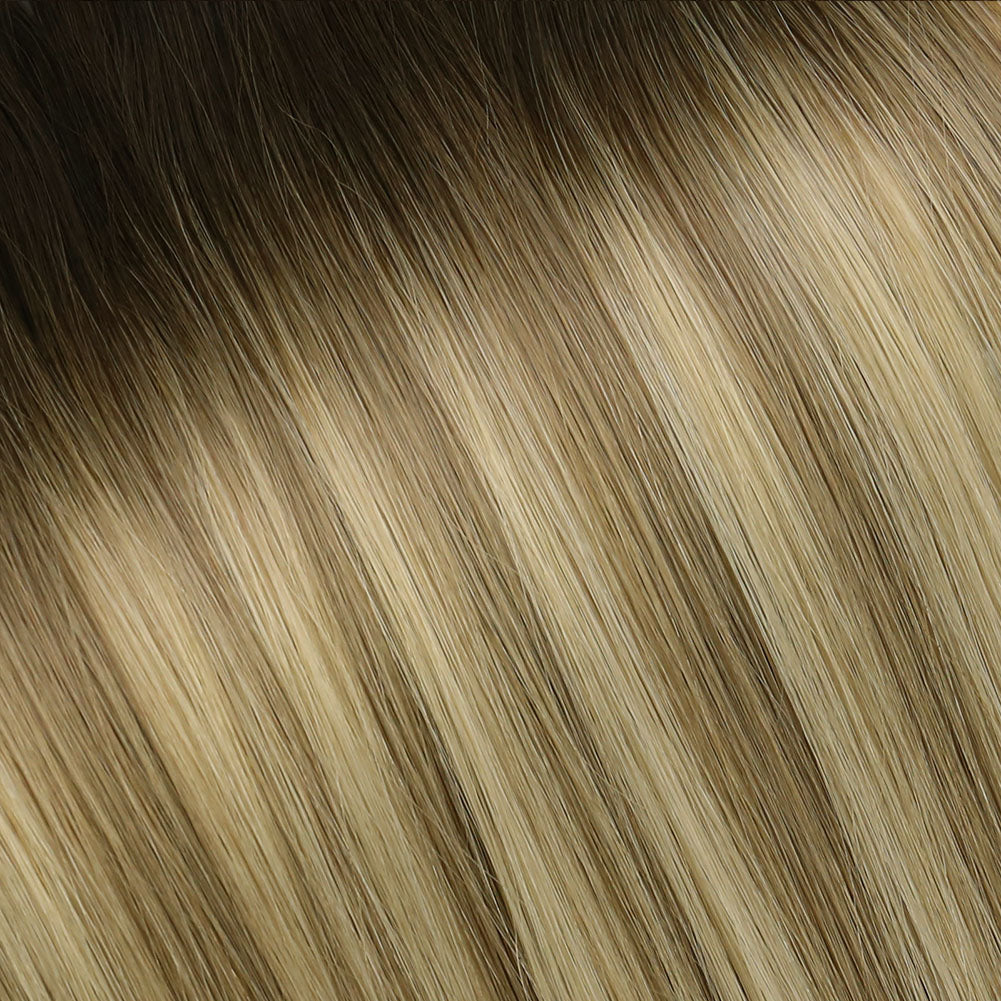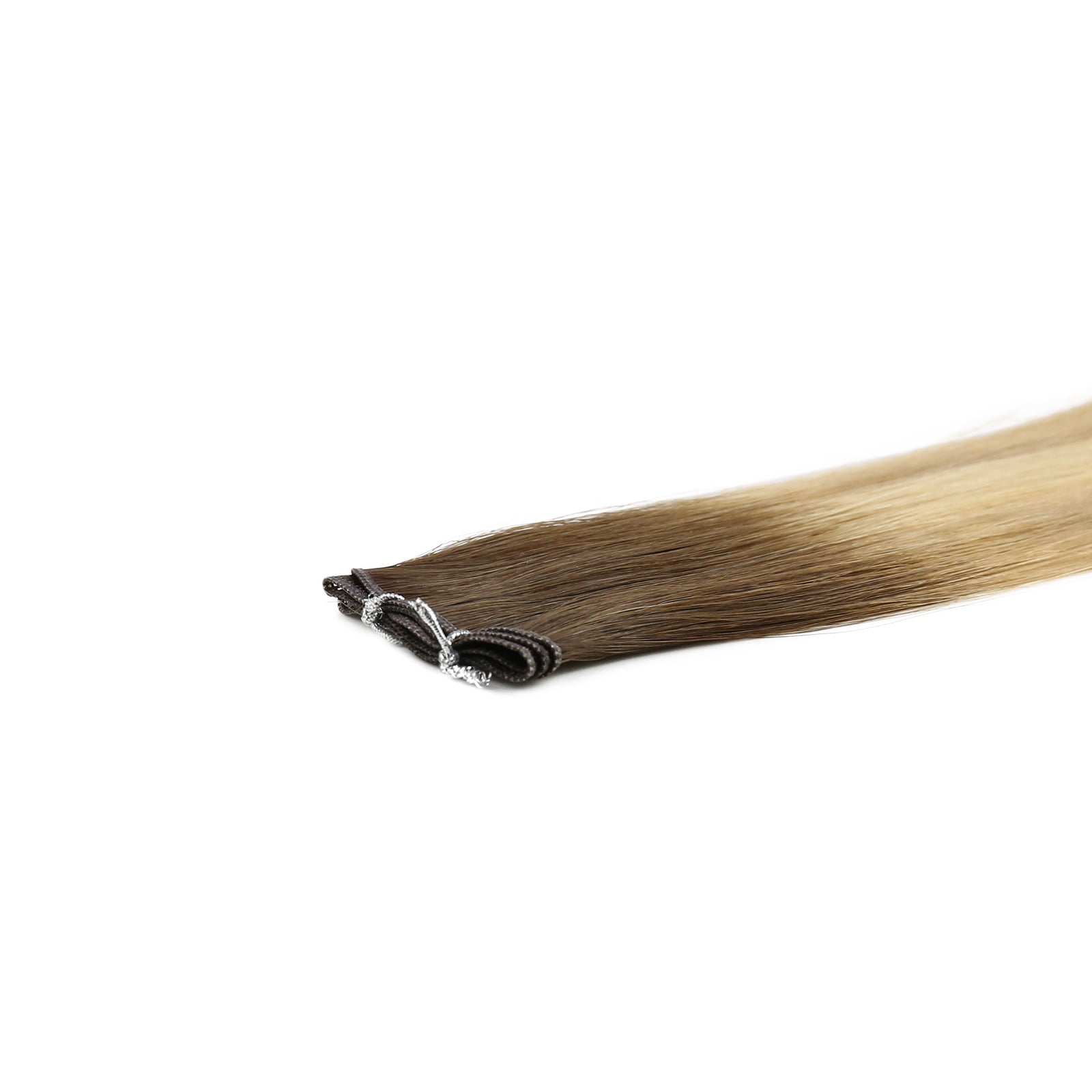Curling human hair extensions is a fantastic way to add volume and elegance to your look, but it requires a bit of know-how to do it right. Whether you're prepping for a special occasion or just want to switch up your daily style, understanding the right tools, techniques, and care methods is crucial to achieving those dreamy, bouncy curls without damaging your precious locks.
This guide will delve into the essentials of choosing the right tools, the step-by-step process of curling extensions, and how to maintain them so they last longer and stay gorgeous. Ready to transform your hair extensions into stunning curls? Let’s get rolling!

What are human hair extensions?
Human hair extensions are strands of real human hair that are used to enhance volume, length, and style of one’s natural hair. They can be clipped, glued, or sewn into place, providing a versatile and natural-looking option for hair enhancement.
Human hair vs. Synthetic hair extensions
Human hair extensions offer a natural appearance and texture that blends seamlessly with one's own hair, unlike synthetic extensions made from synthetic fibers that often appear glossier and less natural. The primary difference between the two is their reaction to heat: human hair can withstand heat styling using tools like curling irons and straighteners, while synthetic fibers may melt or deteriorate unless they are specifically heat-resistant.
Can human hair extensions be curled without being damaged?
Like what I just mentioned above, human hair extensions provides significant styling versatility, allowing them to be curled, straightened, dyed, and styled in various ways just like natural hair. These extensions also offer greater longevity and can be maintained more easily than synthetic versions. What’s more, with proper care, human hair extensions can last a long time and can be reused, making them a cost-effective and natural-looking choice for enhancing one’s hairstyle.
What to prepare to curl human hair extensions
Before attempting to curl human hair extensions, it's crucial to prepare properly to ensure that the styling is effective and that the extensions are protected from damage. Selecting the right tools and products is the first step in this process. Different styling tools, such as curling irons, hot rollers, and flexi rods, offer various benefits and suit different styling needs.
-
Curling Irons: These tools offer unparalleled control over the shape and size of curls, making them perfect for achieving precisely defined, tight curls. They are especially suited for styles where curl precision is key, such as spiral curls or ringlets.
-
Hot Rollers: Ideal for those seeking softer, more voluminous curls, hot rollers apply heat more gently than curling irons. They are a great choice for a natural, bouncy look that adds volume without stressing the hair, making them excellent for everyday elegance.
-
Flexi Rods: For a completely heat-free option, flexi rods are the way to go. They allow you to achieve a variety of curl types, from waves to tight curls, depending on the size of the rod used. Since they don’t involve heat, flexi rods eliminate the risk of heat damage, preserving the integrity of the hair extensions.
Recommended heat settings for different hair textures
When curling human hair extensions, it is crucial to adjust the heat settings according to the texture of the hair to avoid overheating and potential damage. For finer hair textures, it is advisable to use lower temperatures to prevent any weakening or breakage of the hair fibers. Typically, heat settings should be kept below 350 degrees Fahrenheit. Coarser hair textures, which can handle more heat, may still require careful heat management to maintain the hair’s health and appearance. By adhering to these guidelines, you can ensure that the extensions retain their quality and last longer.
How to curl your human hair extensions
In this section, we explore how to curl your human hair extensions step by step. Whether curling them before attaching or styling them once in place, each technique offers unique advantages to achieve your desired look.

Curling human hair clip-in extensions
Curling clip-in hair extensions before application allows for easier handling and can give you a more uniform and cohesive look. Here's a detailed guide on how to achieve beautifully curled clip-ins:
-
Preparation
Begin by laying your clip-in extensions flat on a clean, heat-resistant surface. Brush each weft gently to ensure there are no tangles, preparing them for smooth curling.
-
Apply Heat Protectant
Spray a light layer of heat protectant over the extensions to safeguard them from thermal damage. This step is crucial as it helps maintain the health and quality of the hair.
-
Section and Curl
Heat your curling iron to the appropriate temperature—typically below 350 degrees Fahrenheit for human hair. Take a small section of the hair from the first weft and wrap it around the curling iron. Hold the hair in place for about 10 to 15 seconds before gently releasing it, forming a curl.
-
Set the Curl
Allow the curl to cool and set by either letting it hang freely or pinning it gently to the surface. Cooling helps the curl retain its shape longer.
-
Repeat
Continue this process, working through each weft one at a time. Keep the sections uniform to ensure consistent curls throughout all pieces of the extension.
-
Optional Brush Out
Once all extensions are curled and cooled, you can choose to gently brush through them with a wide-tooth comb or fingers for a softer, more natural look.
-
Ready for Application
Once your extensions are curled and styled to your liking, they're ready to be clipped into your hair. This method not only protects the extensions but also integrates them better with your natural hair for a seamless finish.
Curling extensions already attached to your hair
Styling k-tips, i-tips and other hair extensions after they've been attached to your natural hair demands finesse to seamlessly blend both textures and ensure uniform styling. Here's how to achieve that:
-
Section Your Hair
Divide your hair and the extensions into manageable sections. Use clips to hold the sections you are not currently working with out of the way.
-
Apply Heat Protectant
Generously spray a heat protectant over both your natural hair and the extensions to prevent heat damage.
-
Curl
Using a curling iron appropriate for your hair type and desired curl size, curl each section. Start close to the roots (but not too close to avoid heat damage to your scalp) and wrap the hair around the iron, holding for about 10-15 seconds before releasing.
-
Blend
To ensure the curls blend naturally, take alternating sections of your natural hair and extension hair when curling. This technique helps integrate them more effectively.
-
Set the Style
Once all sections are curled, let them cool. You can then gently run your fingers through the curls to blend them or use a wide-tooth comb for a looser wave. Finish with a light mist of flexible hold hairspray to set the style and add shine. This approach ensures your hairstyle has uniformity and volume, making the extensions appear as natural as possible.
How to curl hair extension without heat
Opting for heat-free curls is a healthier choice for both your natural hair and extensions, preserving their integrity by avoiding thermal damage. Here's how to create stunning curls using braiding and rollers.

Braiding for waves
Start by lightly dampening your hair and the extensions. This slight moisture will help set the style as it dries. Divide the hair into sections depending on how loose or tight you want the waves to be. For loose, beachy waves, make fewer, thicker braids. For more defined waves, create multiple, thinner braids. Secure each braid with soft hair ties to prevent marking the ends. Allow the hair to air dry completely, which could take several hours or overnight. Once dry, gently undo the braids and use your fingers to separate the waves, avoiding a brush to keep the curls intact.
Using rollers
For roller setting, choose the size of the rollers based on the type of curl you desire. Small rollers will give tighter curls, while larger ones create softer, voluminous waves. Start with damp hair, apply a setting lotion or mousse for hold, and wrap sections of hair around each roller. Secure the rollers and allow your hair to dry fully, ideally overnight. Carefully remove each roller, and lightly finger comb or use a wide-tooth comb to style the curls.
Both methods not only safeguard against damage but also extend the lifespan of your extensions. They offer a versatile, easy-to-maintain styling solution capable of producing various looks, from gentle, natural waves to more defined curls.
How to care your hair extensions after curling
-
To keep your curls looking fresh longer, apply a light mist of flexible hairspray after styling. Avoid touching your hair too often, as the oils from your hands can weigh down the curls and cause them to lose their bounce.
-
Use a wide-tooth comb or your fingers to gently detangle curled extensions. Start from the ends and work your way up to prevent breaking the curls. Avoid using brushes as they can disrupt the curl pattern and cause frizz.
-
Before bed, loosely braid your curled hair or gather it into a loose ponytail or bun to prevent tangling. Use a silk or satin pillowcase, which reduces friction and helps maintain both the curls and the health of your hair. This routine ensures your curls remain intact and the extensions stay in good condition.
Conclusion
Choosing high-quality human hair extensions is crucial for versatile styling and achieving the best results. Experimenting with different curling techniques and styles can enhance your look and boost your confidence. Remember, properly caring for your curled extensions not only maintains their beauty and longevity but also ensures they continue to look their best. Regular maintenance, gentle styling, and proper night-time routines are key to preserving the quality of your curls and extensions. Embrace the variety and enjoy the endless styling possibilities!
